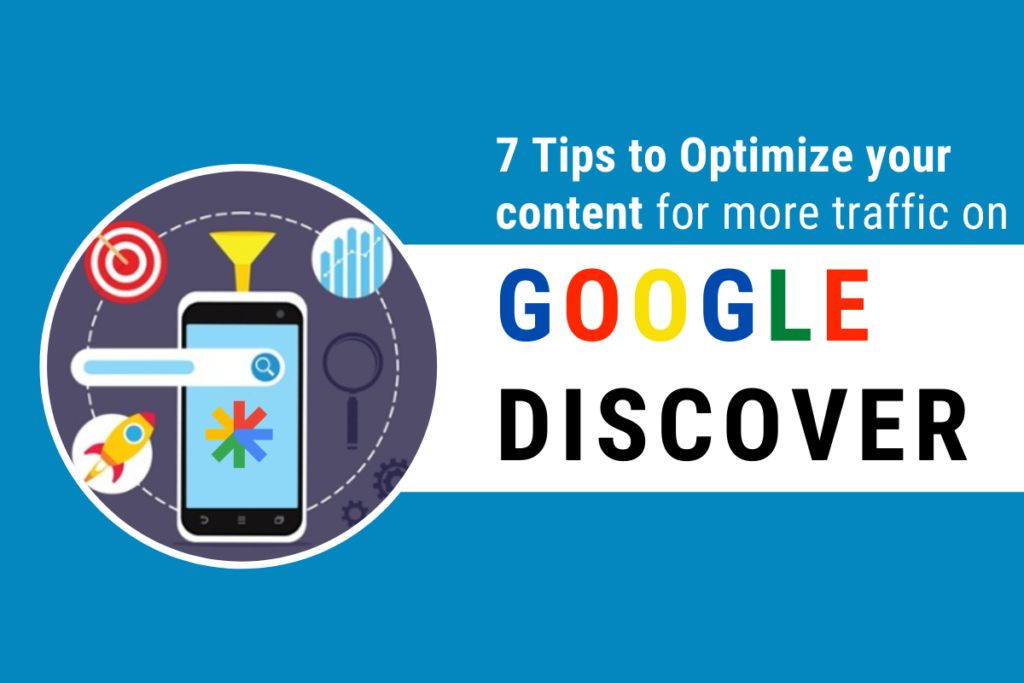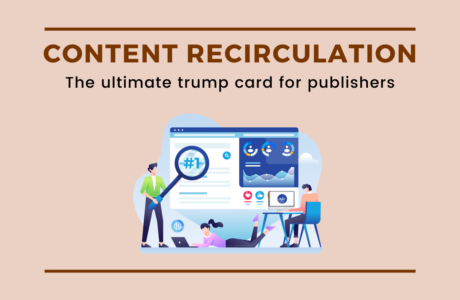In an era of personalization, Google Discover is gaining popularity every day as it provides relevant content feed to a user. Mobile device users can get the latest content, news updates and exciting feed powered by AI, their search results and online behaviour. Earlier known as Google Feed, this content recommendation engine is the new query less way to get plenty of information on the web. Know more about Google Discover for publishers in this article.
What is Google Discover for publishers?
Google Discover is a cool feature for content distributors and content viewers. Since 2018, Google Discovery has helped with an effortless content consumption experience. The user doesn’t have to always type a query to get their everyday content feed. Similar to any other social media feed, Google Discover churns out the relevant results according to the user’s preferences. It can be anything from music, news, entertainment, fitness, diet, travel and many more. As Google Discover is the easiest way for content consumers. It is ultimately one of the best platforms for content creators to promote their content and gain more traffic.
How do I optimize my content for Google Discover?
As you are now aware of the amazing features of Google Discover for publishers, do you wish that your content should also be available easily to the users across the globe? As a publisher, you must already be taking care of various content optimization techniques for better rankings and more traffic. However, here are the 7 most important tips to optimize your content for Google Discover. But before you begin, ensure that your website is verified and indexed in Google Search Console. Also, here are the Google News standards that you should be aware of.
Create Engaging Content on niche topics:
The quality of your content is the most important factor that can make or break your business. It is obvious that quality content brings engagement and more traffic to your site. Just like your social media feeds, the discover feed also focuses on content engagement. Content creation on niche topics with trustworthy sources is the way to reach the discover feed. As Google tries to drive relevance to various content topics, always do enough research to pick a topic before you start writing. Remember that Google ranks the content based on quality and user interest. With Google Discover for publishers, along with organic search, you can also get visits from activities like:
- Send a newsletter
- Share your content in various forums
- Utilize social media platforms for content sharing
- Adapt the link strategy and redirect the users to other articles by adding links at the bottom.
Never take structured data for granted:
Not focusing on schema markup or structured data is one reason that affects your probability of appearing on Google Discover for publishers. Even if you want your content to be easy for the users to understand, always remember that Google’s crawler is the first to read it. Hence, write and optimize your content in a way that Google makes it visible to the relevant users. Let’s take a look at some of the common ways where you Google uses Structured Data:
- Featured Snippets: The featured snippet is the top result on the Google page for a particular query. You should take care of your content, presentation, SEO and optimize the same to make your way to the featured snippets.
- Top Stories Carousel: A searcher looking for a specific story can also click on certain topics around their area of interest. The “Top Stories” carousel. Along with this, it also comes up with 5 clickable panels on the top viz. shopping, quotes, news, videos, books and more. Publishers should work on ways to appear your content in these sections.
- “People Also Ask” tab: This is available on the first page of Google search for expandable tabs with various questions and their answers. You can try using H2 headings, answer these queries in your content and appear in Google knowledge graph. You can always choose to organically work on your content and also take help from various tools to create structured data markups.
Keep your users hooked with high-quality images and videos:
Visual content is the first impression for every user. If I see an image or a video relevant to my choice of content, I will immediately click on the article to check out more. High quality and engaging images are the trump cards to optimize your content for Google Discover. The shift from text to visual is significant along with Google discover for publishers. Google is also making efforts to facilitate image and video creation through AMP stories. As Google says that large pictures do comparatively well, you can also go for them instead of thumbnails. According to Google, you should also avoid using your site logo as your image.
Focus on AMP Optimization:
A great user experience is key to keep the users hooked. Along with that, it is also a major Google ranking factor. Accelerated Mobile Pages help in fast loading speed for a page that prevents the users from leaving the page. We all know that a bad UX and slow loading pages are like a nightmare and major factor of losing customers. With the Google Search Console report for Discover, one can also compare the AMP and Non-AMP data and one can optimize accordingly.
If you have not optimized your content yet by making it fast with AMP, your readers might leave your site and find a way out to your competitors.
Choose Readwhere Complete Mobile Solution to make your site AMP ready with quick loading time, improved user experience and more traffic on Google Discover for publishers.
Tip: High-quality images that are at least 1200 px wide can boost your content performance on Google.
Always publish trending and evergreen content:
Invest some time and be a storyteller with your content. In a world where every millisecond, something significant happens, content is endless. It is your job which piece of content you wish to present. For being visible on Google Discover, evergreen content is as important as niche content. Make a room for newsworthy as well as evergreen content. If your business is in travel, rather than keeping a halt on content creation regarding travel due to the pandemic, you can come up with evergreen topics like:
- Educational/ fact-based content regarding various travel locations
- Instructions/ tips and things to do when travel starts up
- Reviews, suggestions and recommended travel destinations
Know your competitors well:
One of the best ways to learn and grow is to analyse what your competitors do. If your content is not visible on Google Discover, the wise move is to perform competitor research. It will help you figure out what is going wrong and perform well. Get answers to questions like why Google didn’t choose your content for discover, what your competitor is doing in a unique and better way. This is essential and helpful to optimize your content more. Along with this, also follow relevant topics on Google Discover for in-depth analysis and gather information to make amends in your data and content marketing strategy.
Examine E-A-T for your content:
In the recently updated Google discover help document, significant measures are provided to focus on better optimization of content. Expertise, authoritativeness and trustworthiness (E-A-T) are the three terms highlighted in the updated document. The automated systems by Google surface content from various sites that demonstrate E-A-T. Site owners who are still looking for ways to improve their E-A-T should focus more on their content, originality and all these questions required for search. Even if search and discover are different, the overall principles of E-A-T for both are similar. Hence the site owners and content publishers can not afford to miss out of these factors.
The best way to optimize more is to learn and implement with the help of the experts.
Choose Readwhere CMS to optimize your content for Google Discover. Enjoy more reach, traffic, loyal customers and revenue.


